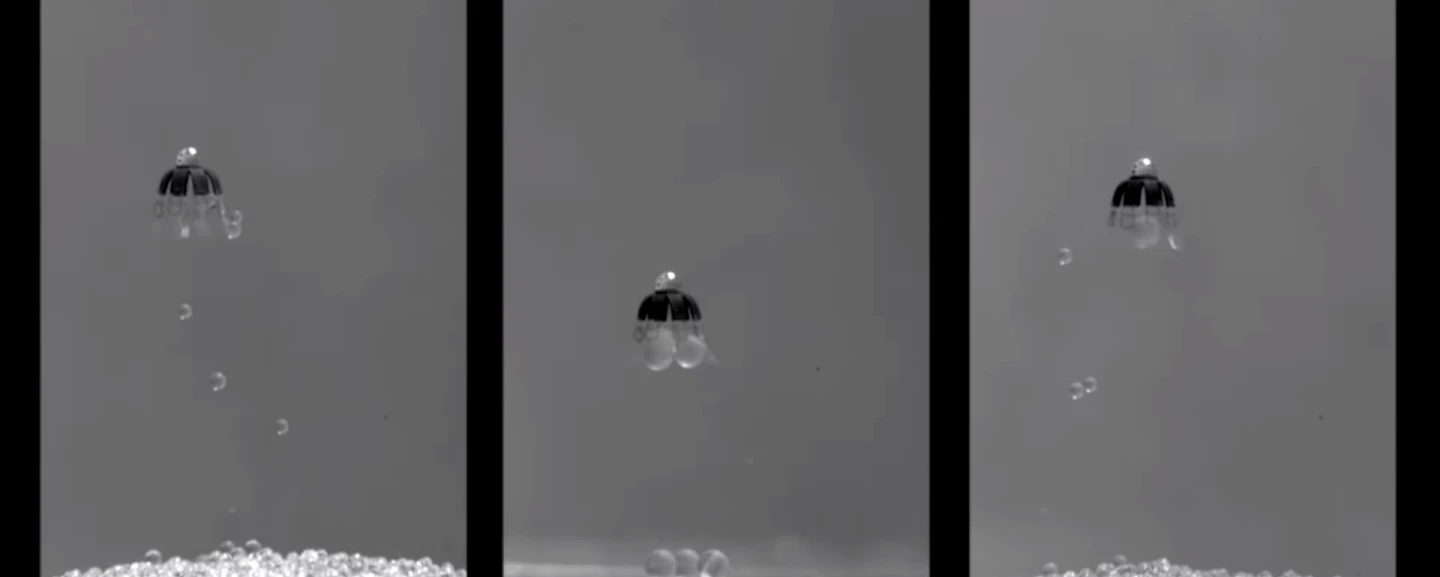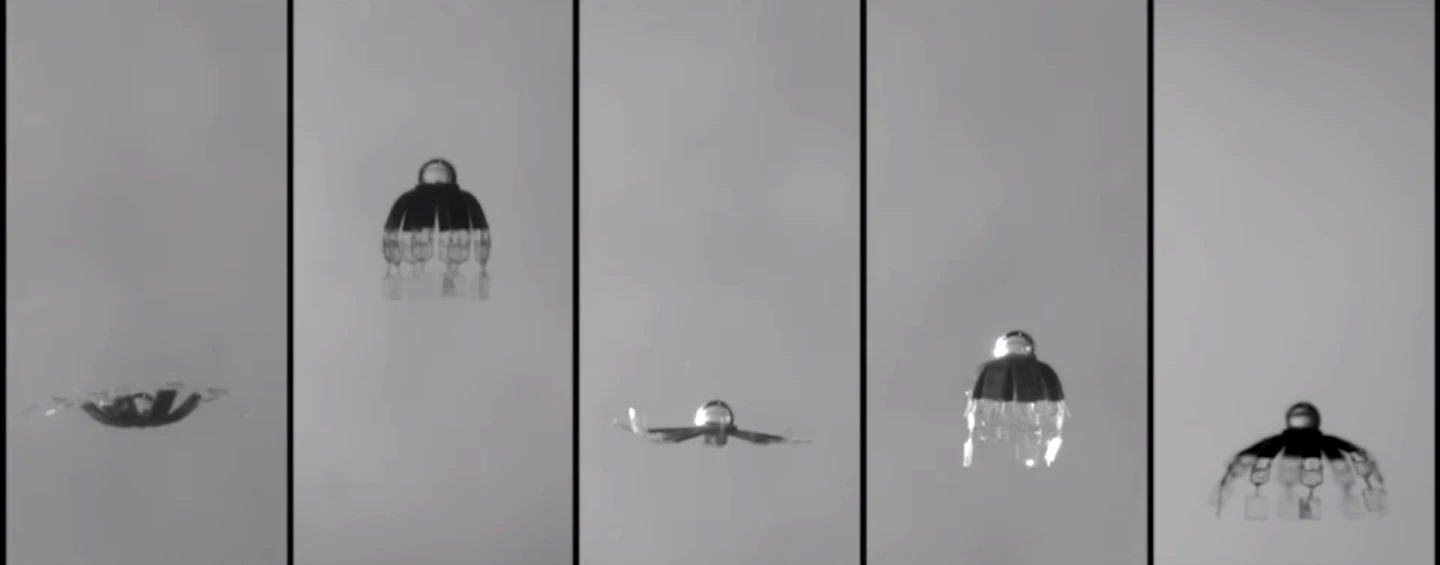A team of engineers in Germany has created a tiny jellyfish-inspired robot, which can not only swim, but transport objects, mix fluids and even bury itself. It's hoped the five-millimeter tetherless "Jellyfishbot" could help us understand the survivability of baby jellyfish in changing environments. A worthy challenge, but the potential applications for the tiny aquatic bot goes far beyond that.
Led by Dr Metin Sitti, the team from the Max Planck Institute for Intelligent Systems (MPI-IS) in Stuttgart, Germany, was inspired by scyphomedusae ephyra, the juvenile of the most widely distributed jellyfish, which – despite their small size and simple body structure – are able to control fluidic flow around their bodies to perform a range of complex tasks.

Jellyfish have a critical role to play in the ocean, and one of the aims of the research is to understand more about how changing aquatic environments caused by pollutants, temperature, salinity etc., might affect the morphology and kinematics of the ephyrae and therefore their survivability.
To control and propel the jellyfishbot, the scientists embedded magnetic particles into each of the eight elastomer lappets (or "flappy bits" to you and I), which are articulated when exposed to an external (oscillating) magnetic field. In addition to swimming, the jellyfishbot was able to successfully perform a suite of tasks, including transporting beads of different sizes, food-catching, burrowing to escape predators, mixing of different fluids and creating a chemical path in its wake.

But that is just the beginning for the team, which has already moved onto the next stage – looking at potential medical uses for even tinier jellyfishbots. This additional work was presented this month at one of the world's most prestigious robotics conferences, Robotics: Science and Systems, where it won the Best Paper Award. More on that research will be revealed soon, but as of writing, the paper has yet to be published in a journal.
"A possible application scenario is to control the robot to swim inside the bladder under the guidance of ultrasound imaging, and to patch to a target, such as cancerous tissue, to release the cancer drug for a long time in controlled doses," says Xiaoguang Dong, a Ph.D. student in the Physical Intelligence Department at the MPI-IS who participated in the research.
The team's original paper was published this month in the journal Nature Communications and the jellyfishbot can be seen in action in the video below.
Source: Scimex






